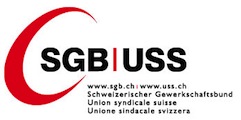Publications des institutions partenaires
Which factors drive the skill-mix of migrants in the long-run?
A pervasive, yet little acknowledged feature of international migration to developed countries is that newly arriving immigrants are increasingly highly skilled. This paper analyses the factors affecting the change in the skill composition of immigrants in Switzerland between 1980 and 2010 using a framework suggested by Grogger & Hanson (2011). Our findings suggest that improved...
Institution partenaire
English / 01/04/2015
Public versus private provision of liquidity: is there a trade-off?
To what extent is public debt private liquidity? Much policy advice given in the aftermath of the financial crisis rests on the assumption that increasing public debt relaxes borrowing constraints of private households. This is the case for ad-hoc debt limits, which are exogenous to public policy. Instead, if debt limits are fully endogenous, as e.g. in the case of the natural...
Institution partenaire
English / 01/04/2015
The evolution of comparative advantage: measurement and implications
We estimate productivities at the sector level for 72 countries and 5 decades, and examine how they evolve over time in both developed and developing countries. In both country groups, comparative advantage has become weaker: productivity grew systematically faster in sectors that were initially at greater comparative disadvantage. These changes have had a signicant impact on trade...
Institution partenaire
English / 01/04/2015
Asymmetric information and imperfect competition in lending markets
We measure the consequences of asymmetric information and imperfect competition in the Italian lending market. We show that banks' optimal price response to an increase in adverse selection varies with competition. Exploiting matched data on loans and defaults, we estimate models of demand for credit, loan use, pricing, and firm default. We find evidence of adverse selection and...
Institution partenaire
English / 01/04/2015
Optimal incentives and distributive justice in competitive environments
Institution partenaire
English / 01/04/2015
Measuring and aggregating social performance of microfinance investment vehicles
This paper develops a method to measure and compare social performance of microfinance investments at the level of microfinance investment vehicles. Drawing from measurement theory, it develops formal quality criteria that individual social performance indicators, the selection, and the aggregation of such indicators into a single metric need to satisfy. Social performance indicators...
Institution partenaire
English / 31/03/2015
Economic Momentum and Currency Returns
Past trends in a broad range of fundamental variables predict currency returns. We document that a trading strategy that goes long currencies in countries with strong economic momentum and short currencies in countries with weak economic momen- tum exhibits an annualized Sharpe ratio of about one and yields a significant alpha when controlling for standard carry, momentum, and value...
Institution partenaire
English / 27/03/2015
Central Bank Collateral Frameworks
This paper seeks to inform about a feature of monetary policy that is largely overlooked, yet occupies a central role in modern monetary and financial systems, namely central bank collateral frameworks. Their importance can be understood by the observation that the money at the core of these systems, central bank money, is injected into the economy on terms, not defined in a market,...
Institution partenaire
English / 08/03/2015
Dopamine D2-receptor blockade enhances decoding of prefrontal signals in humans
The prefrontal cortex houses representations critical for ongoing and future behavior expressed in the form of patterns of neural activity. Dopamine has long been suggested to play a key role in the integrity of such representations, with D2-receptor activation rendering them flexible but weak. However, it is currently unknown whether and how D2-receptor activation affects prefrontal...
Institution partenaire
English / 04/03/2015
A polynomial optimization approach to principal-agent problems
This paper presents a new method for the analysis of moral hazard principal-agent problems. The new approach avoids the stringent assumptions on the distribution of outcomes made by the classical first-order approach and instead only requires the agent's expected utility to be a rational function of the action. This assumption allows for a reformulation of the agent's...
Institution partenaire
English / 01/03/2015
Generosity across contexts
Extensive research in economics explores generosity in monetary allocations. However, generosity often involves the allocation of non-monetary goods or experiences. Existing evidence suggests that generosity may be higher in such contexts, though no direct comparison exists. Here, we compare generosity in decisions that vary whether allocations are monetary or non-monetary. In two...
Institution partenaire
English / 01/03/2015
Apathy but Not diminished expression in schizophrenia is associated with discounting of monetary rewards by physical effort
Negative symptoms in schizophrenia have been grouped into the 2 factors of apathy and diminished expression, which might be caused by separable pathophysiological mechanisms. Recently, it has been proposed that apathy could be due to dysfunctional integration of reward and effort during decision making. We asked whether apathy in particular is associated with stronger devaluation (...
Institution partenaire
English / 01/03/2015
The role of bounded rationality and imperfect information in subgame perfect implementation: an empirical investigation
In this paper we conduct a laboratory experiment to test the extent to which Moore and Repullo's subgame perfect implementation mechanism induces truth-telling in practice, both in a setting with perfect information and in a setting where buyers and sellers face a small amount of uncertainty regarding the good's value. We find that Moore-Repullo mechanisms fail to implement...
Institution partenaire
English / 01/03/2015
Decentralized matching and social segregation
Social segregation is a ubiquitous feature of human life. People segregate along the lines of income, religion, ethnicity, language, and other characteristics. This study provides the first experimental examination of decentralized matching with search frictions and institutionalized segregation. The findings indicate that, without a segregation institution, high types over-segregate...
Institution partenaire
English / 01/03/2015
Long-term Relationships: Static Gains and Dynamic Inefficiencies
Do contractual frictions matter when firms are engaged in repeated interactions? This paper argues that long-term relationships, which allow firms to (partly) overcome the static costs associated with low contractibility, will under certain circumstances create dynamic inefficiencies. We consider the repeated interaction between final good producers and intermediate input suppliers,...
Institution partenaire
English / 01/03/2015
Taking Banks to Solow
We develop a simple integration of banks into the Solow model. The objective is to provide a tractable benchmark for analyzing the long-term impact of crises on economic activities and growth. A fraction of firms have to rely on banks for financing their investments while banks face themselves an endogenous leverage constraint. Informed lending by banks and uninformed lending through...
Institution partenaire
English / 24/02/2015
Anticipatory anxiety disrupts neural valuation during risky choice
Incidental negative emotions unrelated to the current task, such as background anxiety, can strongly influence decisions. This is most evident in psychiatric disorders associated with generalized emotional disturbances. However, the neural mechanisms by which incidental emotions may affect choices remain poorly understood. Here we study the effects of incidental anxiety on human...
Institution partenaire
English / 18/02/2015
Automatic versus choice-dependent value representations in the human brain
The subjective values of choice options can impact on behavior in two fundamentally different types of situations: first, when people explicitly base their actions on such values, and second, when values attract attention despite being irrelevant for current behavior. Here we show with functional magnetic resonance imaging (fMRI) that these two behavioral functions of values are...
Institution partenaire
English / 18/02/2015
Pages
Le portail de l'information économique suisse
© 2016 Infonet Economy












